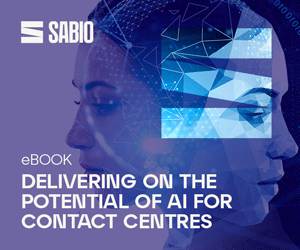Tim Pickard of Sabio discusses how the COVID-19 outbreak has made a lasting impact on the customer experience industry.
COVID-19 has clearly had a significant impact on organizations and the global economy, as well as people’s health and livelihood.
However, now that the initial rapid response phase of the crisis looks to be behind us, we are now taking time to think about how we move forward and return to a more normal – if different – working environment.
I was interested to read a recent Sunday Times article titled “Five jobs most in demand after COVID-19“. Its focus on technology, customer services, culture, communications and data/insights confirmed some of the new priorities that we will face.
Technology at home and at work has definitely proved an enabler of change, evolving our pre-pandemic working and learning practices, refining how we deliver customer service and also keeping us safe online with stronger cybersecurity.
Microsoft’s CEO has reported seeing “two years” worth of digital transformation in two months, and we’re certainly seeing lots of examples of how the pandemic is telescoping the future.
Artificial intelligence (AI) for instance, has quickly become part of our “new-normal”, with chatbot services booming and AI-powered customer service platforms scaling to handle the huge increase in demand.
The impact of this has been felt particularly by the supermarkets and other essential retailers, where technology plans that might have taken years to come to fruition have been scoped, designed and delivered in just weeks.
IT’s ability to respond rapidly has enabled a mass shift to remote working during the pandemic and accelerated the use of AI-powered self-service in critical customer service environments.
Together this has effected a transformation that many may have overlooked as it happened so fast – and it’s one that is unlikely to be reversed.
Organizations have also had to think about their broader social impact. The way consumer businesses are dealing with this crisis – managing an unprecedented increase of calls that exceeded typical Christmas peaks – is having a significant brand impact and could prove key to their near- and long-term viability.
Shifting to remote working and the ability to ramp staff and use AI to support high volumes of more general enquiries has also allowed the most prepared and dynamic retailers to not just cope but flourish during this period of exceptional change. Their customers will remember and respond to this.

Tim Pickard
So, as we enter the next phase, the smart organizations will be those that take the time to look critically at how their customer service function has performed during this unprecedented period.
What is also clear is that this is a huge learning opportunity for everyone involved, particularly if we can continue to harness technology, utilize the power of self-service and apply the learning from this challenging time.
It’s going to be fun.
































